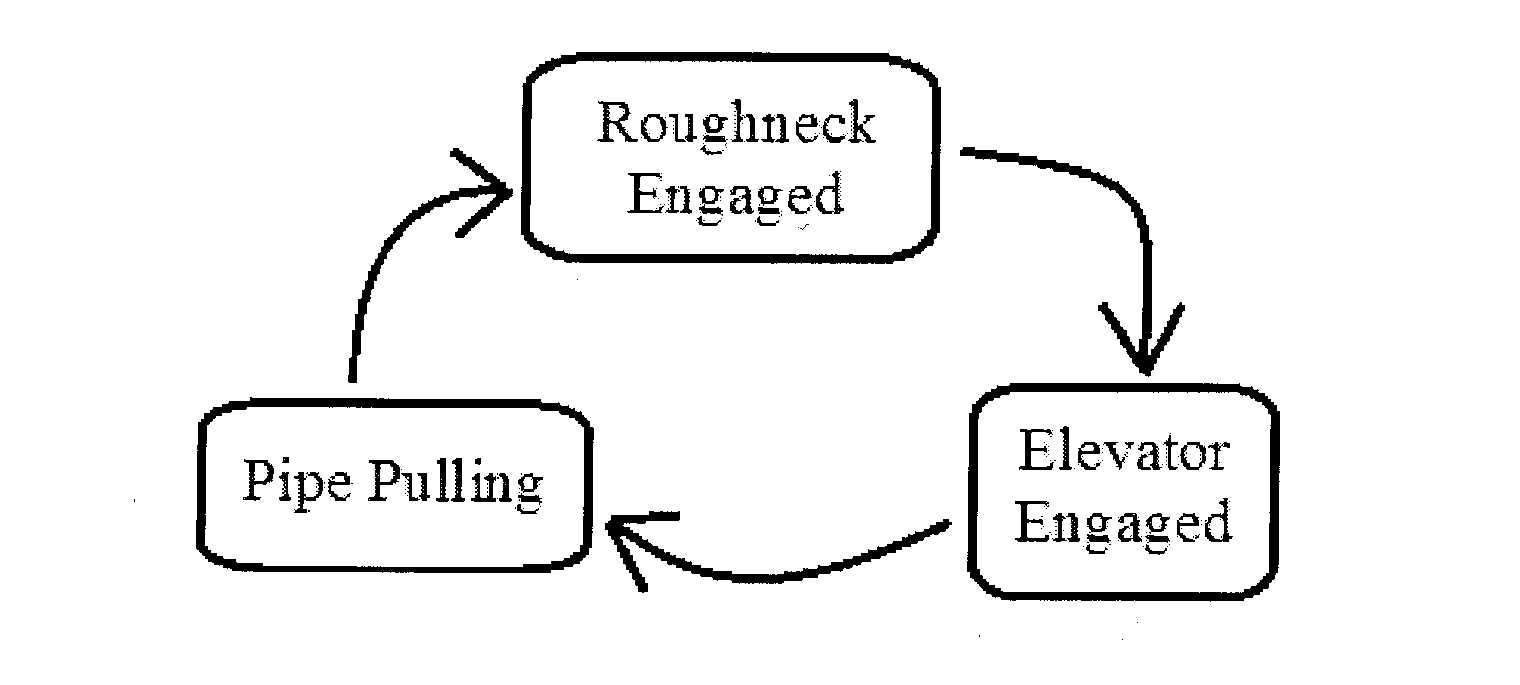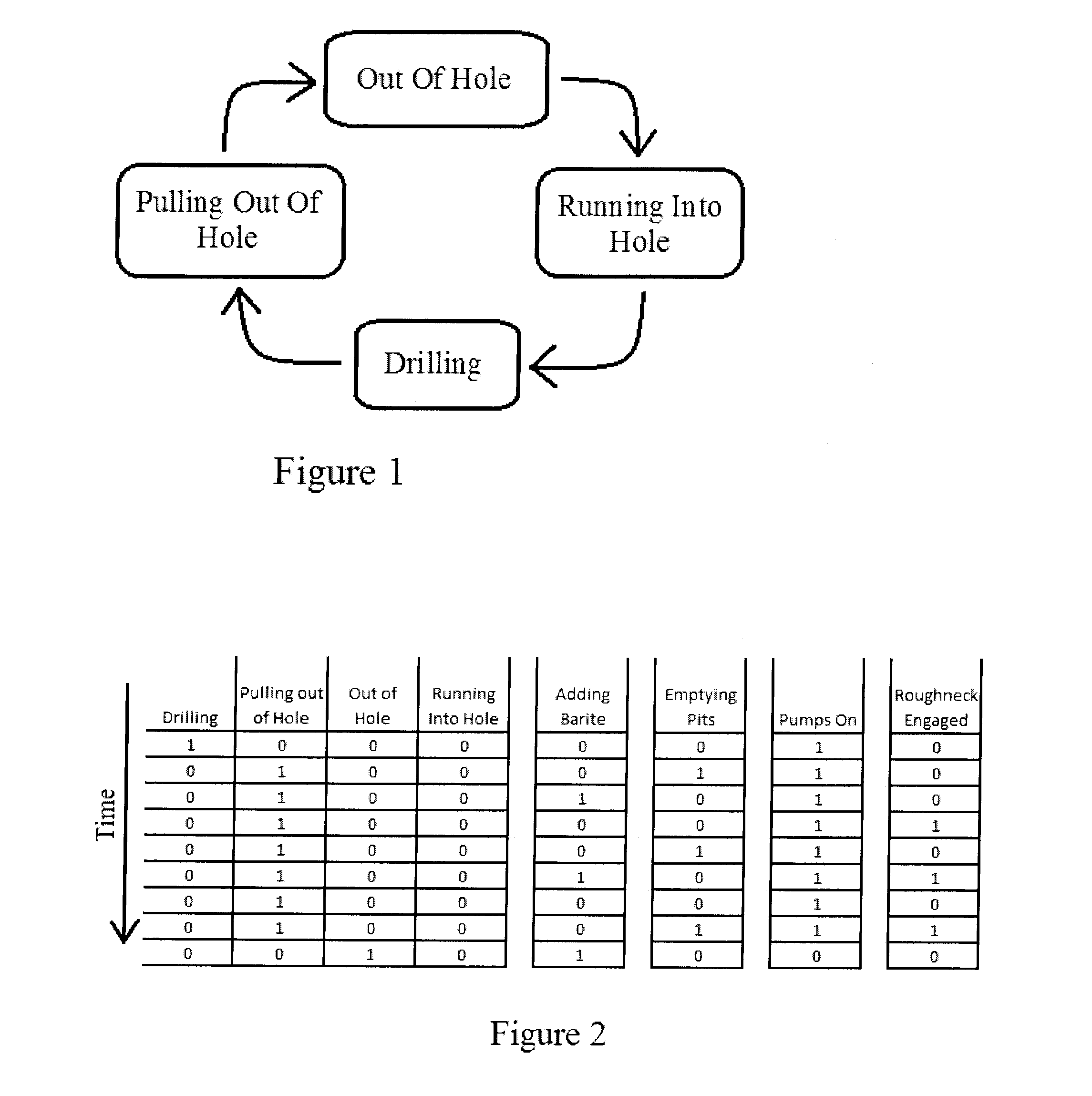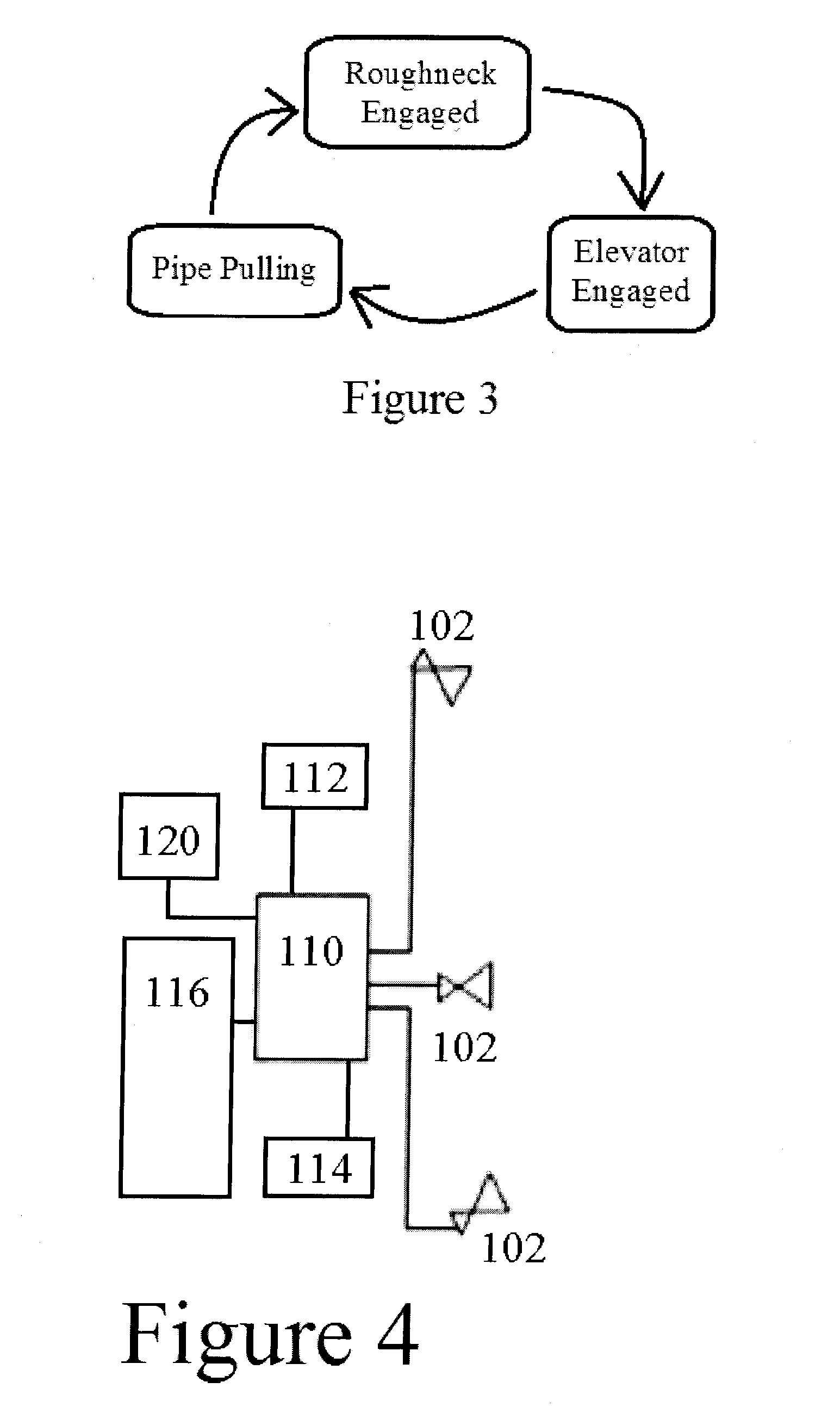System and method for estimating rig state using computer vision for time and motion studies
a computer vision and rig state technology, applied in the field of system and method for estimating rig state using computer vision for time and motion studies, can solve the problems of difficult to measure the significant portion of rig activities and sensing problems, and the individual sensors do not have direct access to the big-picture rig state, so as to improve the automatic decision-making and rig control
- Summary
- Abstract
- Description
- Claims
- Application Information
AI Technical Summary
Benefits of technology
Problems solved by technology
Method used
Image
Examples
Embodiment Construction
[0018]The Rig State Estimation system, (“RSE”), may contain several parts including a model of rig state not as a single discrete “state” that can be entered and exited from, but as a collection of facts about a rig that may be estimated and updated in real-time. In addition to multiple sensors 120, which may provide information such as measured surface readings or down-well measurements, RSE uses computer vision and machine learning algorithms specifically designed to estimate the rig state from video cameras 102. The resulting information about rig state may then be incorporated into a display, along with other relevant pieces of information (e.g., video frames) and the state information is used to improve algorithm performance by altering the relative importance of the variables under consideration and other algorithm-level modifications. The information may also be used to form T&M databases 112 and reports, and to annotate the collected video with relevant T&M information. This...
PUM
 Login to View More
Login to View More Abstract
Description
Claims
Application Information
 Login to View More
Login to View More - R&D
- Intellectual Property
- Life Sciences
- Materials
- Tech Scout
- Unparalleled Data Quality
- Higher Quality Content
- 60% Fewer Hallucinations
Browse by: Latest US Patents, China's latest patents, Technical Efficacy Thesaurus, Application Domain, Technology Topic, Popular Technical Reports.
© 2025 PatSnap. All rights reserved.Legal|Privacy policy|Modern Slavery Act Transparency Statement|Sitemap|About US| Contact US: help@patsnap.com



